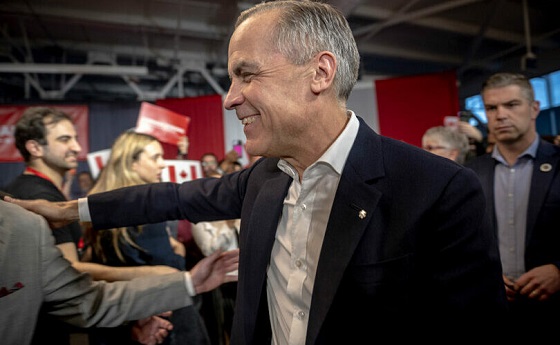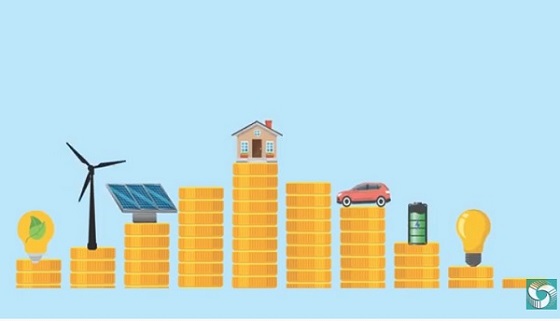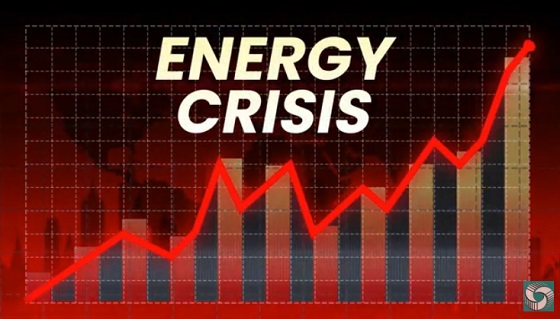Business
Is Working From Home Providing The Work-Life Balance That We’ve Been Promised For So Long?

Our office work culture has dramatically shifted in the last month. All over the world kitchen tables, spare rooms, and nooks have been transformed into working spaces. The people I’ve spoken to really enjoy the perks of working from home. That’s not to say that there aren’t difficulties, but there are a lot of benefits that go with the challenges.
For most white-collar jobs, working from home has provided the work-life balance that we’ve been promised for so long. Once things return to normal and kids return to school, we shouldn’t rush back to the office if we don’t have to.
Being at home has allowed people to actually focus on their tasks without being interrupted by quick questions or sidebar chats. People are able to plan their workday on their own schedule and maximize their productivity. Without a daily commute, people are finding more time in the day and are less burnt out.
And let’s face it, the office was never a great place to work, it was just our only option.
There are a lot of flaws with our office culture that we’ve just learned to put up with. The biggest negative to the office environment is that it kills creativity. In order for people to be creative, they need space to think. When your day is filled with back to back meetings, email interruptions, and chatty co-workers it can be hard to find some time to yourself. I’ve always tried to take short walks a few times a day so that I’m able to let ideas sink into my brain. That can be a no-no in office culture since it’s believed you can only be productive when you are sitting at your desk.
Sitting in a chair for 8 hours regardless of workload is standard across all sorts of industries. This is an antiquated idea leftover from the industrial revolution to maximize efficiency in a factory. While there are jobs that require this schedule, a knowledge worker is not one of them. A good portion of our day is answering emails, editing documents, reviewing work, and reporting numbers. Ever since the smartphone became mainstream we’ve known that this work can be done anywhere in the world, and now we know it can be done on a large scale. Maybe your best meetings happen when you can do 10 pushups right before it starts. It could be that a quick afternoon nap enables you to focus through the afternoon. I do my best thinking while pacing, but it’s hard to concentrate when everyone is giving you sideways glances.
Working at your own pace will allow you to work your best.

As many people are also finding out, working at your own pace requires discipline. Setting your own schedule means you have to understand your own work habits and work within them. I can be my own worst enemy when it comes to distractions. I’ve had to re-learn how to extract the best work from myself by self-evaluating my work.
Not only are people getting more done, but they are happier about it, and learning more about themselves so they can be more productive in the future.
When the COVID-19 risk lowers enough for offices to re-open, I suggest managers take a long hard look at reverting back to 40 hours a week in a chair. We’ve put a lot of effort into developing new skills during the quarantine and we shouldn’t waste it. There is an opportunity sitting before us to radically change what work is, and how we do it. Let’s embrace the lessons we’ve learned along the way and come out of this pandemic stronger than ever.
2025 Federal Election
As PM Poilievre would cancel summer holidays for MP’s so Ottawa can finally get back to work

From Conservative Party Communications
In the first 100 days, a new Conservative government will pass 3 laws:
1. Affordability For a Change Act—cutting spending, income tax, sales tax off homes
2. Safety For a Change Act to lock up criminals
3. Bring Home Jobs Act—that repeals C-69, sets up 6 month permit turnarounds for new projects
No summer holiday til they pass!
Conservative Leader Pierre Poilievre announced today that as Prime Minister he will cancel the summer holiday for Ottawa politicians and introduce three pieces of legislation to make life affordable, stop crime, and unleash our economy to bring back powerful paycheques. Because change can’t wait.
A new Conservative government will kickstart the plan to undo the damage of the Lost Liberal Decade and restore the promise of Canada with a comprehensive legislative agenda to reverse the worst Trudeau laws and cut the cost of living, crack down on crime, and unleash the Canadian economy with ‘100 Days of Change.’ Parliament will not rise until all three bills are law and Canadians get the change they voted for.
“After three Liberal terms, Canadians want change now,” said Poilievre. “My plan for ‘100 Days of Change’ will deliver that change. A new Conservative government will immediately get to work, and we will not stop until we have delivered lower costs, safer streets, and bigger paycheques.”
The ’100 Days of Change’ will include three pieces of legislation:
The Affordability–For a Change Act
Will lower food prices, build more homes, and bring back affordability for Canadians by:
- Cutting income taxes by 15%. The average worker will keep an extra $900 each year, while dual-income families will keep $1,800 more annually.
- Axing the federal sales tax on new homes up to $1.3 million. Combined with a plan to incentivize cities to lower development charges, this will save homebuyers $100,000 on new homes.
- Axing the federal sales tax on new Canadian cars to protect auto workers’ jobs and save Canadians money, and challenge provinces to do the same.
- Axing the carbon tax in full. Repeal the entire carbon tax law, including the federal industrial carbon tax backstop, to restore our industrial base and take back control of our economy from the Americans.
- Scrapping Liberal fuel regulations and electricity taxes to lower the cost of heating, gas, and fuel.
- Letting working seniors earn up to $34,000 tax-free.
- Axing the escalator tax on alcohol and reset the excise duty rates to those in effect before the escalator was passed.
- Scrapping the plastics ban and ending the planned food packaging tax on fresh produce that will drive up grocery costs by up to 30%.
We will also:
- Identify 15% of federal buildings and lands to sell for housing in Canadian cities.
The Safe Streets–For a Change Act
Will end the Liberal violent crime wave by:
- Repealing all the Liberal laws that caused the violent crime wave, including catch-and-release Bill C-75, which lets rampant criminals go free within hours of their arrest.
- Introducing a “three strikes, you’re out” rule. After three serious offences, offenders will face mandatory minimum 10-year prison sentences with no bail, parole, house arrest, or probation.
- Imposing life sentences for fentanyl trafficking, illegal gun trafficking, and human trafficking. For too long, radical Liberals have let crime spiral out of control—Canada will no longer be a haven for criminals.
- Stopping auto theft, extortion, fraud, and arson with new minimum penalties, no house arrest, and a new more serious offence for organized theft.
- Give police the power to end tent cities.
- Bringing in tougher penalties and a new law to crack down on Intimate Partner Violence.
- Restoring consecutive sentences for multiple murderers, so the worst mass murderers are never let back on our streets.
The Bring Home Jobs–For a Change Act
This Act will be rocket fuel for our economy. We will unleash Canada’s vast resource wealth, bring back investment, and create powerful paycheques for workers so we can stand on our own feet and stand up to Trump from a position of strength, by:
- Repealing the Liberal ‘No Development Law’, C-69 and Bill C-48, lifting the cap on Canadian energy to get major projects built, unlock our resources, and start selling Canadian energy to the world again.
- Bringing in the Canada First Reinvestment Tax Cut to reward Canadians who reinvest their earnings back into our country, unlocking billions for home building, manufacturing, and tools, training and technology to boost productivity for Canadian workers.
- Creating a One-Stop-Shop to safely and rapidly approve resource projects, with one simple application and one environmental review within one year.
Poilievre will also:
- Call President Trump to end the damaging and unjustified tariffs and accelerate negotiations to replace CUSMA with a new deal on trade and security. We need certainty—not chaos, but Conservatives will never compromise on our sovereignty and security.
- Get Phase 2 of LNG Canada built to double the project’s natural gas production.
- Accelerate at least nine other projects currently snarled in Liberal red tape to get workers working and Canada building again.
“After the Lost Liberal Decade of rising costs and crime and a falling economy under America’s thumb, we cannot afford a fourth Liberal term,” said Poilievre. “We need real change, and that is what Conservatives will bring in the first 100 days of a new government. A new Conservative government will get to work on Day 1 and we won’t stop until we have delivered the change we promised, the change Canadians deserve, the change Canadians voted for.”
Automotive
Canadians’ Interest in Buying an EV Falls for Third Year in a Row

From Energy Now
Electric vehicle prices fell 7.8 per cent in the last quarter of 2024 year-over-year, according to the AutoTader price index
Fewer Canadians are considering buying an electric vehicle, marking the third year in a row interest has dropped despite lower EV prices, a survey from AutoTrader shows.
Forty-two per cent of survey respondents say they’re considering an EV as their next vehicle, down from 46 per cent last year. In 2022, 68 per cent said they would consider buying an EV.
Meanwhile, 29 per cent of respondents say they would exclusively consider buying an EV — a significant drop from 40 per cent last year.
The report, which surveyed 1,801 people on the AutoTrader website, shows drivers are concerned about reduced government incentives, a lack of infrastructure and long-term costs despite falling prices.
Electric vehicle prices fell 7.8 per cent in the last quarter of 2024 year-over-year, according to the AutoTader price index.
The survey, conducted between Feb. 13 and March 12, shows 68 per cent of non-EV owners say government incentives could influence their decision, while a little over half say incentives increase their confidence in buying an EV.
-

 Business2 days ago
Business2 days agoChinese firm unveils palm-based biometric ID payments, sparking fresh privacy concerns
-

 2025 Federal Election1 day ago
2025 Federal Election1 day agoStudy links B.C.’s drug policies to more overdoses, but researchers urge caution
-

 Environment2 days ago
Environment2 days agoExperiments to dim sunlight will soon be approved by UK government: report
-

 2025 Federal Election2 days ago
2025 Federal Election2 days agoConservatives promise to ban firing of Canadian federal workers based on COVID jab status
-

 2025 Federal Election1 day ago
2025 Federal Election1 day agoCarney’s Hidden Climate Finance Agenda
-

 2025 Federal Election1 day ago
2025 Federal Election1 day agoWhen it comes to pipelines, Carney’s words flow both ways
-

 Business1 day ago
Business1 day agoIs Government Inflation Reporting Accurate?
-

 2025 Federal Election2 days ago
2025 Federal Election2 days agoFormer WEF insider accuses Mark Carney of using fear tactics to usher globalism into Canada






